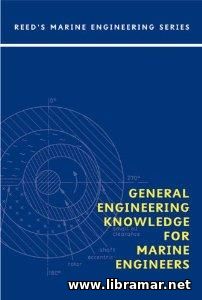 First of all, we would like to note that the main of the initially declared objectives of this volume was to prepare the marine engineering students and, actually, learners of any relevant discipline for the COC, i.e. Certificates of Competency. The material that has been included in this book by the author is covering the work that is necessary to pass the examination.
Note, however, that this book is not really intended to serve as a nicely detailed reference book - it should rather be considered a specific examination guidance. Most of the sketches included in the book are mainly intended to serve as the applications to the exam requirements. Obviously, the best way to learn the subject is to read very thoroughly and carefully through each of the chapters of this book, paying particular attention to the sketchwork and drawings, where applicable. Plus, there are several questions located at the end of each chapter helping to control the progress and evaluate your knowledge.
The book has been conveniently arranged in nine major sections that address the construction materials and welding issues, fuel oil technologies, marine boilers, ancillaries, corrosion matters, boiler water treatment and associated tests, steering gear, shafting arrangements, refrigerating installations, both active and passive measures of fire protection, pumps and various pumping systems together with piping, safety matters and procedures etc.
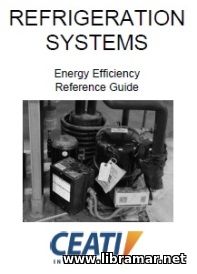 The present guidance has been prepared by CEATI professionals and was specifically aimed at assisting the personnel involved with the implementation of the methods of ensuring energy efficiency and all relevant practices. The main emphasis has been made by the author on the refrigeration systems having a small and medium size.
This publication would also help them to make proper technical decisions relating to the operation and day-to-day maintenance of the existing refrigeration systems; it would even be quite useful when applied to the modification or re-configuration of the subject systems.
The readers will get necessary guidance that is very difficult to obtain in other publications. Various refrigeration systems are characterized in this guide; quick reference on various established techniques of performance optimization is provided; the main procedures of the performance testing have been reviewed. In short, this is a definitely excellent source of information recommended to be used by any persons who are directly involved in any activities that are relating to the refrigeration systems due to the amount of the information contained.
Please note as necessary that the specialists operating and maintaining the refrigeration systems are expected to follow all applicable safety procedures and techniques prior to the commencement of any operations.
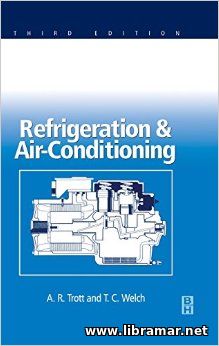 The long list of topics covered within this publication there are compressors, refrigerants, the refrigeration cycle, water towers, condensers, oil in the refrigerant circuits, expansion valves, evaporators, cold store construction, controls and other air conditioning circuit components - their selection and balancing, materials and construction, site erection, and many more, liquid chillers, brines, ice and thermal storage, refrigeration technologies used in the food trades, dairy and some other industries, freezing and freeze-drying of food, refrigeration and air-conditioning load estimation, air movement and different air conditioning methods, air drying and dehumidifiers, heat recovery, heat pumps, control systems, commissioning and important operational matters, periodical maintenance and servicing, fault training, training, economy and efficiency in operation, and catalogue selection.
This work provides several practical examples of the real-life applications of the refrigeration technology and is also showing readers the numerous options that are available to solve the problems that commonly occur in the mechanical cooling systems. Of course, the readers shall understand that it is absolutely not possible to include the all information required to design a complete system in one volume. However, the publication outlines the basic design principles.
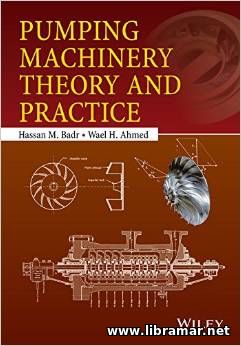 This useful textbook on pumping machinery was prepared to cover both theoretical basics and popular practical applications of various pumping machinery and associated arrangements. The key features of the present publication would include a comprehensive coverage of the relevant technical characteristics of various types of pumps, including axial flow, displacement and centrifugal pumps, considering the performance of the pumping machinery and addressing of the common problems of operational type.
In addition to what is stated above, the book is covering several advanced areas of subject technology, including, for example, both two-phase and three-phase flow pumping systems and multi-phase flow principles. Several different methods of flow rate control and the relevance of those methods to the matters of energy consumption and total efficiency of the machinery have also been touched within this volume.
Each of the chapters contains some informative solved examples taken from real life. It is definitely a truly comprehensive reference source that will be very useful for both practicing engineers and researchers in the subject industry, and also for the students of marine, mechanical and other fields of engineering, owing to the huge amount of technical material that has been included in the volume and the quite easy-to read and understandable manner this material has been arranged by the author.
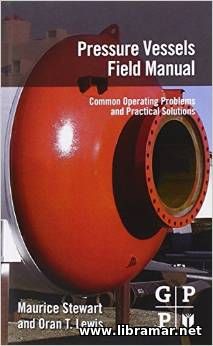 Remarkably handy textbook to be used as reference source covering common degradation mechanism. It will be very useful for people needing advice on how to determine required actions and prevent both heat and chemical damage, and external corrosion.
This is one of the books forming Field Manual series, intended to give the students and experienced mechanical engineers with the recently developed tools that they could use to make necessary alterations, repair and re-rate of the various pressure vessels in accordance with the applicable ASME, API and NBIC standards and technical codes.
The publication contains nicely detailed step-by-step procedures that describe the process of design of the pressure vessels, together with their in-field inspections and alterations. The readers will get the due understanding of how to properly select the pressure vessel specifications that are necessary, evaluate the associated technical reports and determine the allowable stress.
Moreover, it provides guidance on calculating the stresses that usually occur in the pressure vessels and also covering the issues of the selection of construction materials. We would say that this book is absolutely recommended to all technical personnel involved in the design, construction, installation, operation, periodical maintenance and required repair of the pressure vessels.
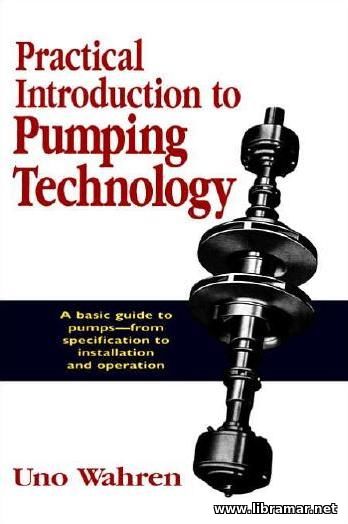 We are offering you a very convenient and remarkably concise reference book released for all users of pumps as well as the application engineers, service and maintenance technicians, and buyers of the above mentioned equipment.
The publication contains, in a very condensed form, huge amount of very valuable technical information on selected types of the centrifugal pumps and positive displacement pumps for given applications, creating the associated paperwork, choosing the best manufacturers of the equipment, and checking the correctness of the vendor data. The readers will find a complete description of those types of pumps together with the terns and technical parameters that are used in pump applications.
In his publication the author, Uno Wahren, outlines all technical data usually required by the engineers, clients and buyers to obtain a correct and comprehensive quote. The book may definitely be treated as a basic yet complete guide to pumps providing the coverage of all technical aspects from specification to the installation and operation. The chapters of the book cover the parameters, calculations, data for specifying pumps, types of pump and their specifications, pump curves, vibration, shaft sealing, viscosity effect, bearings, metallurgy maters, pump drivers, gears and couplings, etc.
 The present eighth release of the world famous publication has retained the directness of the approach applied by the author, Doog Woodyard, and careful attention paid to the essential detail characterizing the predecessors. There have been some new chapters added covering the monitoring control systems plus the governor systems; in this new release of the book the gas turbines have also been addressed together with the most important and relevant safety aspects of the diesel engine operation and maintenance.
It also touches some of the important latest developments, for example the latest diesel-electric liquid natural gas carriers. The high quality text part of the book is supplemented with the numerous labeled images and figures included for better understanding. The chapters of the book provide all readers with the up-to-date technical details and this book will be much appreciated by the people who are studying for the COC, i.e. certificates of competency.
According to the reviews of the customers all over the world, this volume shall be treated as the invaluable reference source for any person with the interest in marine engineering, and involved in design, construction, pre-installation and post-installation testing, maintenance and repair of the diesel engines.
 Here is a truly comprehensive publication providing both piping designers and engineers with an excellent quick reference guidance to the piping-related calculations as well as standards and technical codes that would apply to the piping systems. This volume combines in one handy book the multitude of numerous piping elements like pipes themselves, flanges, valves, supporting arrangements, bolts, flex and expansion joints making up those complex piping systems.
The author of the book has used so many calculations and practical examples based on his own experience of more than forty years as both the instructor and professional piping engineer. Each of the practical examples included by the author in this volume is demonstrating how different piping-related codes and standards can be applied correctly and incorrectly, so that the readers could see the difference and possible consequences of wrong application. Moreover, apart from providing the advice on the intent of the above mentioned standards and codes, this volume is also intended to provide some valuable guidance on compliance with the requirements listed therein.
The reader will get quite clear understanding of the possible failures occurring to the piping systems and know what the code or standard requires the piping designers, makers, fabricators, suppliers, erectors, examiners, inspectors, and owners to do to prevent the failures...
« 1 2 ... 13 14 15 16 17 ... 19 20 » |







